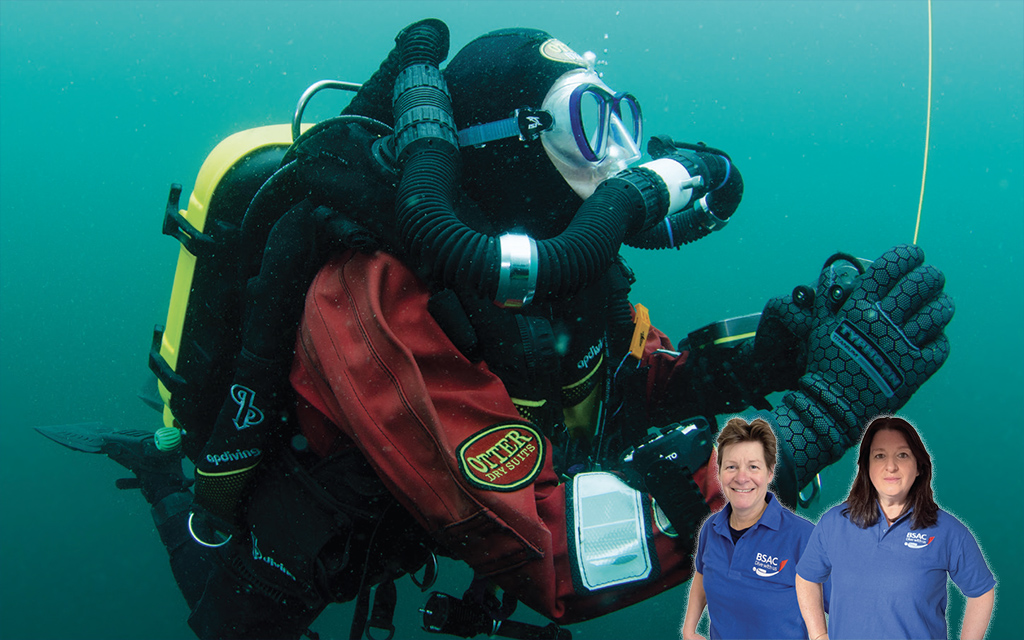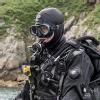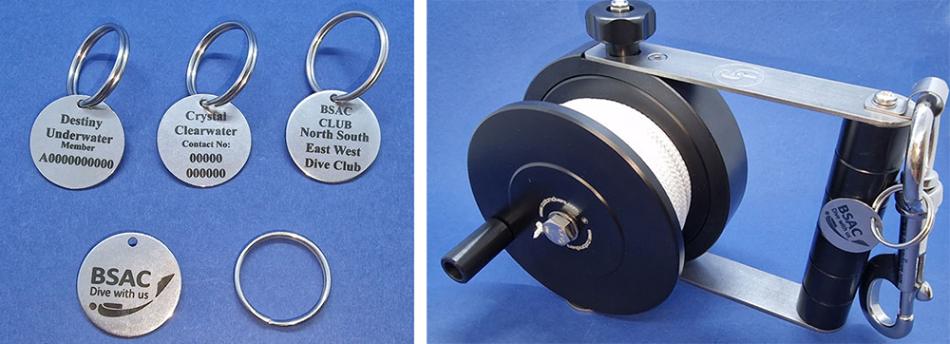
National Diving Officer Sophie Rennie and Head of Diving Sophie Heptonstall have differing opinions when it comes to rebreathers...
THE QUESTION:
At what point does a closed-circuit rebreather become a natural progression... are they for everyone?
Sophie Rennie answers
I was involved in the test run of the BSAC rebreather course in the days of the AP (then Buddy) Inspiration and following my involvement in the Drager semi-closed rebreather. I am glad I did the courses, but rebreathers are not for me.
Why? Well for a start, I am not very tall or strong, it seems, and weighing in at around 37 kilos at the time, the Inspiration rebreather was pretty heavy to move around with. Such that when I tripped in the surf, having closed my mouthpiece but not switched to the open circuit regulator, I almost drowned and resembled a flailing drowning turtle unable to right myself.
I have just been on an event overseas and one person lugged their rebreather all the way out only to find that on day one of the week’s trip alarms were sounding left right and centre and they had to complete the week on open circuit.
Perhaps rebreathers are a ‘Marmite’ thing; you either love them or hate them. I am not sure it is that clear cut, but personally I’m happy on my 10-litre cylinder and being the fish whisperer that I appear to be. I find no issues with getting close up and personal with the underwater life on a somewhat lighter and easier-to-manage open circuit scuba single cylinder as a minimum!
Sophie Heptonstall answers
I think most divers who are looking to move onto a rebreather are very considered in their reasoning, because of the level of investment. I’m not convinced there is a ‘natural progression’ and it will be different for everyone, but the main benefits of rebreathers are the key decision-makers. There will often be a point at which someone feels there’s diving they want to do where a rebreather can offer them more.
Not all marine life enthusiasts are fish whisperers like the NDO, so they often look at rebreathers as an option because they are silent and bubble free. This means that you really can get much closer to underwater life without it darting away at the crucial moment. In addition to that, the constant loop volume means that rebreather divers do not move when breathing in and out as you would in open circuit, keeping the camera steadier.
Even for recreational dives up to 40m, diving on a rebreather offers extended bottom times and, more importantly, reduced decompression stops. Breathing the optimum gas mix at 1 litre a minute allows you to spend more time enjoying the dive and taking in the underwater world.
I’m sure anyone diving Open Circuit Mixed Gas is aware of the price of helium, so yes gas cost is a significant benefit when diving a rebreather. However, the biggest benefit is the safety factor when diving deeper on a rebreather. There are more options available to you if something goes wrong. Thanks to electronic monitoring, the majority of issues trigger warnings that give the diver time to think about their options. These may include fault analysis and actions to stay on the loop, bailing out, or bailing out and running deco manually back on the rebreather in the shallows.
The range of rebreathers has significantly expanded (dare I say since Sophie R piloted the course?) and there’s a variety of weight and size options available to suit different frames. I certainly don’t find it heavier or more cumbersome than a twinset. Taking them abroad is generally quite easy, apart from airline extra luggage costs. But then you get the benefits of really maximising your holiday diving and potentially keeping your nitrogen levels lower.
The gas you breathe is warm and there’s something incredibly relaxing about the silence of diving in a rebreather but personally as a former Open Circuit Mixed Gas Diver I wouldn’t consider doing that kind of depth again on open circuit having benefited from the options available to me in the incident pit first hand.
Article ‘Two Sophies: Rebreather perspectives’ by Simon Rogerson first published in SCUBA magazine, Issue 156 June 2025.
Do you have a question about dive training, kit or safety for the Two Sophies to answer? Email SCUBA Editor Simon Rogerson, simon@scubamagazine.co.uk

 Author: Simon Rogerson | Posted 09 Jul 2025
Author: Simon Rogerson | Posted 09 Jul 2025



